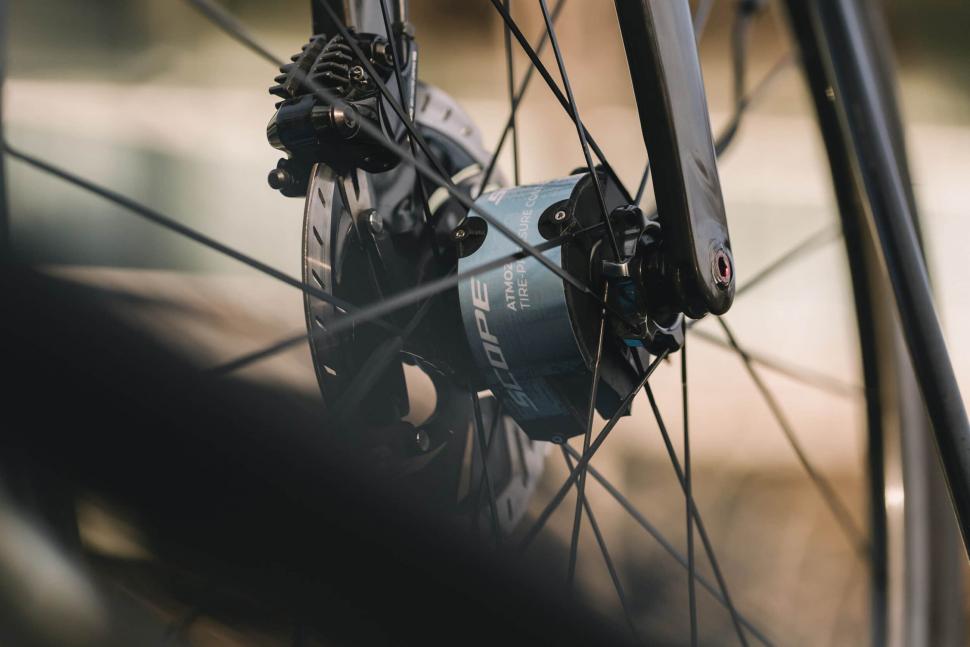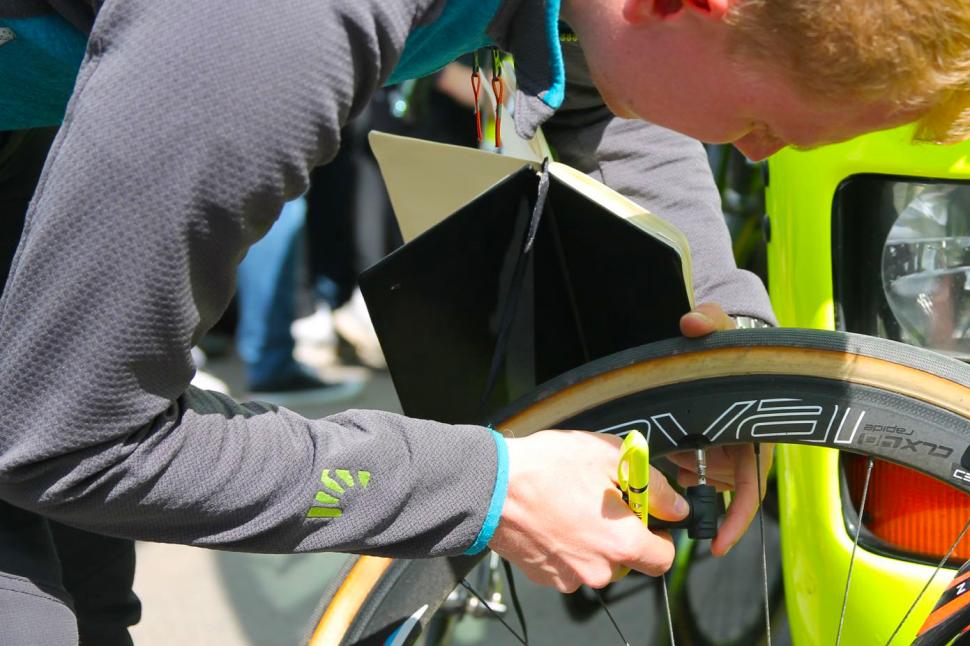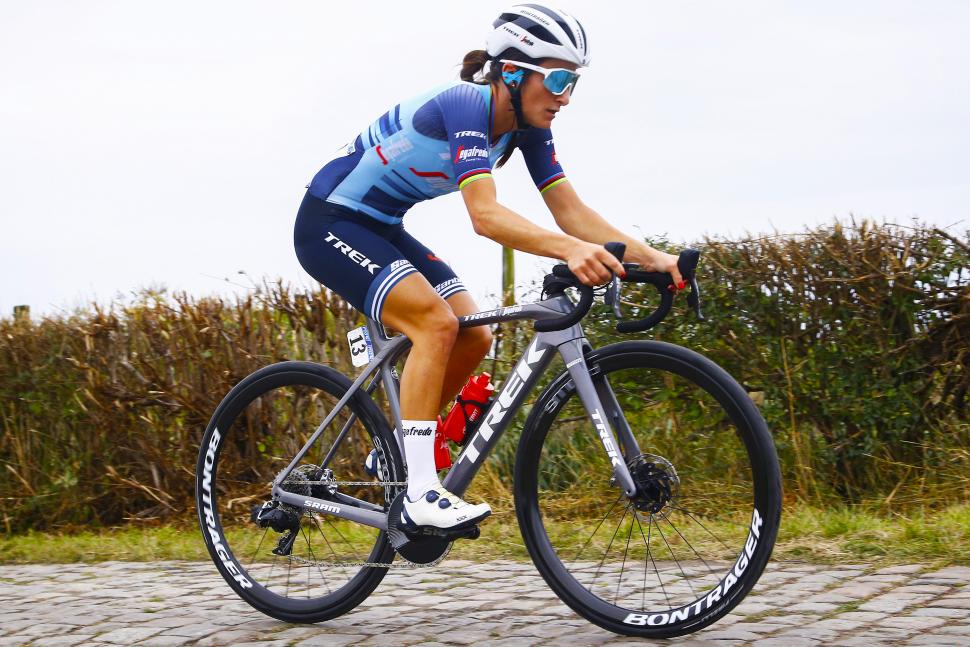- News
- Reviews
- Bikes
- Components
- Bar tape & grips
- Bottom brackets
- Brake & gear cables
- Brake & STI levers
- Brake pads & spares
- Brakes
- Cassettes & freewheels
- Chains
- Chainsets & chainrings
- Derailleurs - front
- Derailleurs - rear
- Forks
- Gear levers & shifters
- Groupsets
- Handlebars & extensions
- Headsets
- Hubs
- Inner tubes
- Pedals
- Quick releases & skewers
- Saddles
- Seatposts
- Stems
- Wheels
- Tyres
- Tubeless valves
- Accessories
- Accessories - misc
- Computer mounts
- Bags
- Bar ends
- Bike bags & cases
- Bottle cages
- Bottles
- Cameras
- Car racks
- Child seats
- Computers
- Glasses
- GPS units
- Helmets
- Lights - front
- Lights - rear
- Lights - sets
- Locks
- Mirrors
- Mudguards
- Racks
- Pumps & CO2 inflators
- Puncture kits
- Reflectives
- Smart watches
- Stands and racks
- Trailers
- Clothing
- Health, fitness and nutrition
- Tools and workshop
- Miscellaneous
- Buyers Guides
- Features
- Forum
- Recommends
- Podcast
TECH NEWS
 Scope Atmoz
Scope AtmozTyre pressure adjustment on the fly? Team DSM will use innovative €3,000 hubs to change tyre pressure mid-race for Paris-Roubaix
It seems that for 2022, experimental tech innovations are back in vogue within the pro peloton. First Mohoric dropped it (his saddle height) like it was hot to win Milan-Sanremo with a daredevil descent of the Poggio and now team DSM are piling on the pressure with a €3,000 on-the-fly inflation hub.
The Scope Atmoz has reportedly been in development for two years, and has already been granted approval from the notoriously hard to please UCI.
The system can inflate and deflate a tyre, using an air reservoir housed within the hub which is linked via a hose to a tubeless rim. Mechanical valves open and close to control the pressure within the tyre, and the rider is able to view front and rear pressure via a compatible head unit thanks to ANT+ and Bluetooth connectivity.
To inflate or deflate their tyres, the Team DSM riders will have a button on their handlebars. What isn’t clear, however, is the speed at which the system can change the tyres pressure, or how quick the reservoir is to refill; and if it doesn’t refill, how many times a rider can use the system within a race.
The system will undoubtedly add some weight to each wheel, but as the majority of the device is housed down at the hub, the effect on how the bike rides shouldn’t be significant.
Why Roubaix?
Tyre pressure is rather important to pretty much any racing cyclist. It doesn’t matter if you’re trying to win on the road, gravel or downhill on a mountain bike, if you have the wrong air pressure you’ll either be going too slowly to win, or you’ll be crashing as soon as there is a corner.
> How do you choose the right tubeless tyre pressure?
Paris-Roubaix is the race on the road calendar where tyre pressure matters the most. Aside from rolling resistance and cornering grip, you’ve also got to get over some of the roughest cobbled sectors in the world. Finding the balance between speed, comfort and cornering grip is very tricky and Roubaix is a race with a lot of perfectly good tarmac, so you can’t just deflate your tyres to super low levels.
A rider would therefore have a significant advantage if they could start the race with higher pressures before lowering those pressures before the cobblestones arrived, with Scope claiming “up to 30 watts of reduced rolling resistance.”
Our hot take though: the Scope Atmoz won’t be winning Roubaix. Lorena Wiebes has a good shot if the second edition of the women’s race comes down to a sprint, but we’re not sure whether DSM will be supplying all of their riders with the tech, or just the men’s team. Of those, previous winner John Degenkolb will likely be the leader, but he was a little off the pace in Flanders.
Latest Comments
- Secret_squirrel 37 min 30 sec ago
Interesting review. I have the Bont MTB+ and they are the most comfy cycling shoes I have ever worn. I use them with a Superfeet Green Insole...
- brooksby 41 min 20 sec ago
And they probably make all their customers sign an NDA and he's already in trouble for going to the press ...
- Miller 43 min 26 sec ago
I have a few thousand km on a bike with the Ltwoo group so I'll be interested to see that reviewed.
- Tom_77 44 min 21 sec ago
It's 2 whole minutes. Jesus wept.
- brooksby 45 min 47 sec ago
It really feels like we're living in some sort of SF dystopian novel, doesn't it?
- OnYerBike 1 hour 4 min ago
Do we need an updated version of the Hairsine ratio that uses watts saved rather than weight saved?
- Rendel Harris 1 hour 22 min ago
Just to be clear (local knowledge!) they didn't move after last year's "drama", they've had various locations around the area but the Brixton Road...
- chrisonabike 2 hours 24 min ago
Only wait until wrinkles give your scalp enough slack to slide on your skull and absorb that energy!
- Jimthebikeguy.com 4 hours 19 min ago
People show up to a sportive, and go out doing what they love.
- don simon fbpe 4 hours 13 min ago
I think most people are over it, then he rears his ugly little head to remind everyone of what an obnoxious twat he really is. It appears that...



Add new comment
11 comments
No one's mentioned it so far but teams have been effectively dropping the presure for the cobbles for years by using the leak rate of latex tubulars and working backwards from the presure they want on the toughest sectors.
I think Silca had a blog post on it.
That's a nice low weight, low tech way to do it.
Until you get your planning wrong and hand Moscon a rock hard tyre on the cobbles...
I saw a very large kind of thing on a mountain bike site several years ago, from a display at a bike show.
From what I understood, the tyre could lower it's pressure easily enough, from a tube from the valve to the unit, but to reinflate using a pumping system that steals effort from the rotation in the hub, much as a dynamo steals effort from the hub.
Simple reservoirs with a valve can only reach equilibrium, unless they have captured Maxwell's demon and put it to use.
Lisa, in this house we obey the laws of thermodynamics!
I do of course realise that is not how this system works, but I got to quote one of the best Simpsons lines back from when it was better.
Not so long ago adjusting tyre pressure on the fly was the theme of a BMW April Fool spoof.

http://hoaxes.org/af_database/permalink/dashboard_tire_pressure_control
The DUKW had tyre pressure adjustment to go from sand to metalled road in WWII
Facinating tech!
Even 'if' they only get to drop pressure once then running higher pressure for the first 100km of road before the cobbles must save a few watts, in theory their riders might be fresher than the rest coming into it.. it'll be interesting to see how this pans out, getting excited already!!
Interesting. Looking at their website, they say it is rechargable via USB-C and can retro-fit any hub. That would seem to rule out using the rotation of the wheel as an infinite source of pumping power.
There are scant details, but my hunch would be the battery is for powering the comms, pressure gauge and valves. With inflation air coming from CO2 cartridges.
No need for CO2 - there is an air reservoir in the hub that is pumped back and forth. The main point of this system is that the pump is in the hub, and can be activated whilst riding, surely?
I don't think there is any pumping going on. The scant details don't mention any sort of compressor, just an 'air reservoir'. So I assume from that there is a limited supply of compressed gas for tyre inflation.
I could be wrong, but I just don't see how you could make a compressor light enough to be useful for racing whilst making it a retro-fit to any existing hub.
edit: I should have followed the UCI link - it says there are no moving parts or compressor. So I think almost certainly a limited supply of gas for inflation.
https://assets.ctfassets.net/761l7gh5x5an/4bbJOZrRGryU7SQdqulm9y/64a3a52...
True - no mention of a pump, just valves for inflation/deflation. Not sure how that would work, though, as opening a valve would just result in the pressure balancing out, towards the lower of the two chambers. This would seem to limit changes in a single direction, per ride, depending on whether you start with the hub at a higher pressure than the tyres, or not.
(Edit: unless there are 2 chambers in the hub)
All very interesting, stuff
I would think just one valve that allows air from the reservoir to the tyre, and another that vents to the outside. There's no real point retaining the air released from the tyre when you drop the pressure, since it would never be at a higher pressure than the tyre itself, so can't be re-used.
The pressure in the tyre and reservoir wouldn't equalise immediately, since the speed of air passing through the valve will be limited, so opening briefly and then closing it could allow increasing of the tyre pressure, while still retaining higher pressure in the reservoir, giving you multiple shots before the reservoir's depleted.